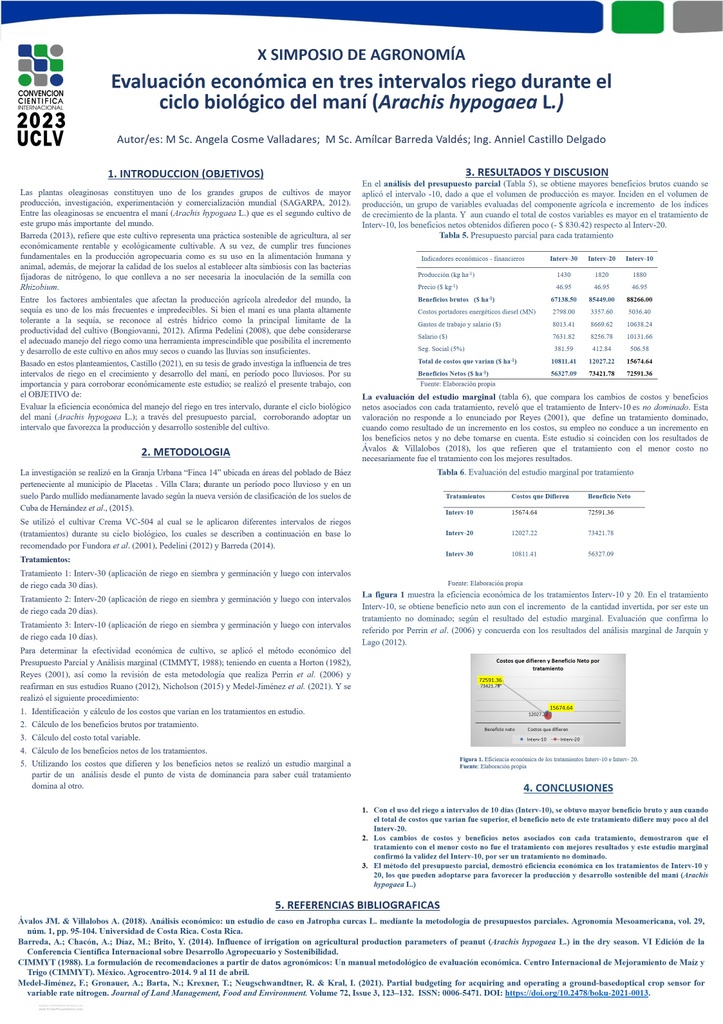Executive Secretary

IX Conferencia Científica Internacional sobre Desarrollo Agropecuario y Sostenibilidad
X Simposio de Agronomía

Resumen
El cultivo del maní (Arachis hypogaea L.); económicamente rentable y ecológicamente cultivable, representa una práctica sostenible de la agricultura. Por su importancia y para corroborar económicamente un estudio del cultivo; se realizó el presente trabajo, con el objetivo de evaluar la eficiencia económica del manejo del riego durante su ciclo biológico, en tres intervalos: cada 10 (Interv-10), 20 (Interv-20) y 30 días (Interv-30). Se utilizó el cultivar Crema VC-504, en condiciones de suelo pardo mullido medianamente lavado y periodo poco lluvioso. A partir de los gastos directos e indirectos en que se incurre, se aplicó el método económico del presupuesto parcial y análisis marginal. Los resultados obtenidos mostraron que, con el uso del riego a intervalos de 10 días (Interv-10), se obtuvo mayor beneficio bruto y aun cuando el total de costos que varían fueron superiores, el beneficio neto de este tratamiento difirió muy poco al del Interv-20. Los cambios de costos y beneficios netos asociados al Interv-10, se confirmaron con el estudio marginal, que es un tratamiento no dominado. El método del presupuesto parcial, expresó eficiencia económica en los tratamientos de Interv-10 y 20, los que se pueden adoptar para favorecer la producción y el desarrollo sostenible del cultivo.
Abstract
Peanut cultivation (Arachis hypogaea L.); economically profitable and ecologically cultivable, it represents a sustainable practice of agriculture. Due to its importance and to economically corroborate a study of cultivation; this work was carried out with the objective of evaluating the economic efficiency of irrigation management during its biological cycle, in three intervals: every 10 (Interv-10), 20 (Interv-20) and 30 days (Interv-30). The Crema VC-504 cultivar was used, under conditions of medium-washed, soft brown soil and a dry period. Based on the direct and indirect expenses incurred, the economic method of partial budget and marginal analysis was applied. The results obtained showed that, with the use of irrigation at intervals of 10 days (Interv-10), a greater gross benefit was obtained and even when the total costs that varied were higher, the net benefit of this treatment differed very little from that of the Interv-20. The changes in costs and net benefits associated with Interv-10, were confirmed with the marginal study, that it is a non-dominated treatment. The partial budget method expressed economic efficiency in the Interv-10 and 20 treatments, which can be adopted to promote production and the sustainable development of the crop.
Sobre el ponente

Angela Cosme Valladares

Discussion

